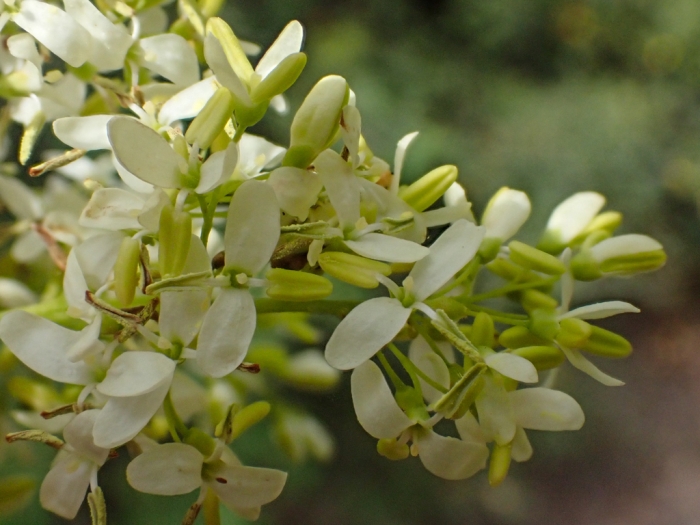California Ash
(Fraxinus dipetala)
California Ash (Fraxinus dipetala)
/
/

Chloe and Trevor Van Loon
CC BY 4.0
Image By:
Chloe and Trevor Van Loon
Recorded By:
Copyright:
CC BY 4.0
Copyright Notice:
Photo by: Chloe and Trevor Van Loon | License Type: CC BY 4.0 | License URL: http://creativecommons.org/licenses/by/4.0/ | Rights Holder: Chloe and Trevor Van Loon | Publisher: iNaturalist | Date Created: 2021-04-24T10:45:38-07:00 |




















































Estimated Native Range
Summary
Fraxinus dipetala, commonly known as California Ash or Two-petal Ash, is a deciduous tree or large shrub native to the chaparral, forest margins, and open woodlands of California and Baja California. It typically grows to a height and width of 15-25 feet (4.5-7.6 meters), with a rounded crown and multiple trunks. The bark is gray and furrowed, contributing to its textured appearance. The leaves are pinnately compound with 3-7 leaflets, each 2-4 inches long. California Ash is notable for its fragrant, fluffy clusters of yellow and white flowers that appear in the spring, each with two distinctive white lobe-shaped petals 2.5–4 mm long. The flowers are bisexual, which is unusual for ashes as they are typically dioecious. Following flowering, the tree produces long, flat samaras (winged fruits) 2–3.2 cm long and 5–9 mm broad, which start green and mature to a tan color, hanging in bunches.
This species is appreciated for its drought tolerance once established, making it suitable for xeriscaping and low-water-use gardens. It is used for ornamental purposes, particularly valued for its spring flowers and its ability to attract pollinators. California Ash thrives in full sun to part shade and prefers well-drained soils but can adapt to various soil types. It is relatively low-maintenance but can be susceptible to ash borer insects and fungal diseases like ash dieback. Gardeners should be aware of these potential issues and monitor for signs of distress.CC BY-SA 4.0
This species is appreciated for its drought tolerance once established, making it suitable for xeriscaping and low-water-use gardens. It is used for ornamental purposes, particularly valued for its spring flowers and its ability to attract pollinators. California Ash thrives in full sun to part shade and prefers well-drained soils but can adapt to various soil types. It is relatively low-maintenance but can be susceptible to ash borer insects and fungal diseases like ash dieback. Gardeners should be aware of these potential issues and monitor for signs of distress.CC BY-SA 4.0
Plant Description
- Plant Type: Tree, Shrub
- Height: 15-25 feet
- Width: 15-25 feet
- Growth Rate: Rapid
- Flower Color: Cream, Green, White
- Flowering Season: Spring
- Leaf Retention: Deciduous
Growth Requirements
- Sun: Full Sun, Part Shade
- Water: Medium, Low
- Drainage: Medium, Fast
Common Uses
Bee Garden, Bird Garden, Butterfly Garden, Fragrant, Low Maintenance, Showy Flowers
Natural Habitat
native to the chaparral, forest margins, and open woodlands of California and Baja California
Other Names
Common Names: Two-Petal Ash
Scientific Names: , Fraxinus dipetala, Fraxinus parryi, Fraxinus trifoliolata, Fraxinus dipetala var. trifoliolata, Fraxinus trifoliata, Fraxinus jonesii, Fraxinus dipetala subsp. trifoliolata, Fraxinus dipetala var. trifoliata, Chionanthus fraxinifolia
GBIF Accepted Name: Fraxinus dipetala Hook. & Arn.